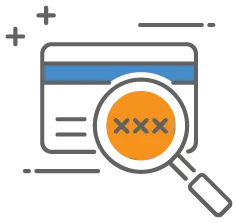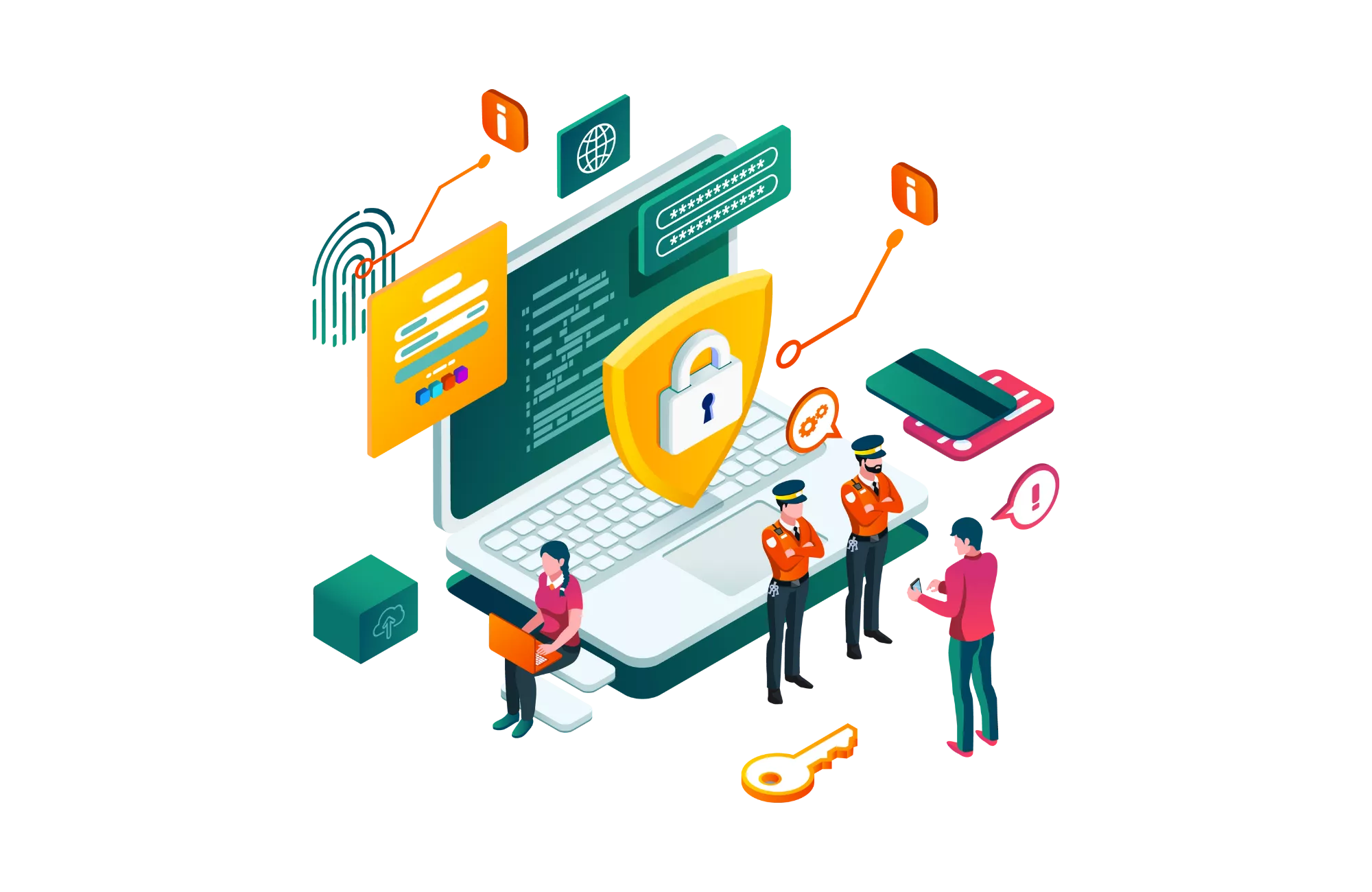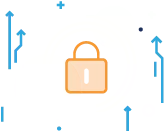
Card networks—the most notable of which are American Express, Discover, Mastercard, and Visa—notify merchants of chargebacks by issuing corresponding chargeback reason codes. These codes outline the most common reason for a particular chargeback, helping simplify the process of communicating underlying issues associated with the transaction.
While chargebacks are an unfortunate byproduct of accepting payments at your business, understanding these codes helps you identify the issue that leads to the chargeback, thus allowing you to determine if it’s worthwhile to dispute it.
With more than 60% of merchants recently reporting an increase in chargebacks within their businesses, there’s never been a better time to come to grips with chargeback reason codes—it could save your business a significant amount of money![1]The Fintech Times. “Chargeback Fraud Threat Growing as 65% of Chargebacks911’s Respondents Reported an Increase in 2022“. Accessed October 17, 2022.
What Are Chargeback Reason Codes?
Chargeback reason codes identify the general reason behind a chargeback. Card networks send these codes to merchants to indicate why a chargeback has been filed. A chargeback reason code may display a chargeback related to fraud, processing errors, consumer disputes, or a variety of other reasons. While the format of chargeback reason codes varies depending on the card network, all codes are alphanumeric.
Importance of Chargeback Reason Codes
Whether it’s an online payment or an in-store transaction, cardholders have the right to file a chargeback if they want to dispute a charge. Chargebacks may result in revenue loss, a strike against your merchant account, and/or merchant account termination.
The first step to fighting illegitimate chargebacks is to look at the chargeback reason code. This information allows you to make a general assessment regarding the chargeback, helping you decide if a chargeback is worth fighting. While further information may come to the surface during a full dispute, chargeback reason codes are a vital component in determining a reason for a chargeback.
Chargeback Reason Code Categories

Processing errors
Processing error codes cover a variety of incidents, such as incorrect currency, incorrect account numbers, late presentment, incorrect transaction codes, duplicate charges, and more. Employing strong internal payment processing operations helps business owners avoid these issues.

Fraudulent activity
This category covers all types of credit card fraud, including card-not-present transaction fraud, card-present fraud, and missing signature fraud. However, the appearance of this type of chargeback reason code does not always indicate a fraudulent transaction—a cardholder may be attempting to disguise a legitimate charge as fraud.

Card authorization errors
Chargebacks related to authorization hold issues often involve problems such as a lack of authorization, declined authorization, charge exceeding the authorization amount, card-not-present authorization issues, or other authorization noncompliance problems.

Cardholder & consumer disputes
This category indicates a customer initiated a dispute. Consumer dispute codes may indicate goods not received, credit not processed, goods not as described, canceled recurring billing subscriptions, and a host of other consumer disputes.

Miscellaneous
Miscellaneous chargeback reason codes involve codes falling outside the other categories listed above. If there’s no specific category available to describe a chargeback reason, card networks place the code in their miscellaneous category.
The Complete Chargeback Reason Codes List
Fortunately, all major credit card networks provide clear information regarding chargeback reason codes. Let’s explore chargeback reason codes from the four leading credit card brands in the United States: Visa, Discover, Mastercard, and American Express.
Visa
Fraud Chargeback Codes | 10.1: EMV Liability Shift Counterfit Fraud 10.2: EMV Liability Shift Non-Counterfeit Fraud 10.3: Other Fraud – Card Present Transactions 10.4: Other Fraud – Card-Not-Present Transactions 10.5: Visa Fraud Monitoring Program |
| Authorization Chargeback Codes | 11.1: Card Recovery Bulletin 11.2: Declined Authorization 11.3: No Authorization |
| Processing Error Chargeback Codes | 12.1: Late Presentment 12.2: Incorrect Transaction Code 12.3: Incorrect Currency 12.4: Incorrect Account Number 12.5: Incorrect Amount 12.6.1: Duplicate Processing 12.6.2: Paid by Other Means 12.7: Invalid Data |
| Consumer Dispute Chargeback Codes | 13.1: Merchandise or Services Not Received 13.2: Cancelled Recurring 13.3: Item Not as Described or Defective Merchandise/Services 13.4: Counterfeit Merchandise 13.5: Misrepresentation 13.6: Credit Not Processed 13.7: Cancelled Merchandise or Services 13.8: Original Credit Transaction Not Accepted 13.9: Non-Receipt of Cash or Load Transaction Value |
Discover
| Fraud Chargeback Codes | UA01: Fraud for Card-Present Transaction UA02: Fraud for Card-Not-Present Transaction UA05: Fraud Chip Counterfeit Transaction UA06: Chip and PIN Transaction UA10: Request Transaction Receipt (Swiped Card Transactions) UA11: Cardholder Claims Fraud (Swiped Transaction, No Signature) |
| Authorization Chargeback Codes | NA: No Authorization DA: Declined Authorization AT: Authorization Non-Compliance EX: Expired Card |
| Processing Error Chargeback Codes | IN: Invalid Card Number LP: Late Presentation |
| Services Chargeback Codes | 5: Good Faith Investigation AA: Does Not Recognize AP: Recurring Payments AW: Altered Amount CD: Credit or Debit Posted Incorrectly DP: Duplicate Processing IC: Illegible Sales Data NF: Non-Receipt of Cash from ATM PM: Paid by Other Means RG: Non-Receipt of Goods, Services, or Cash RM: Cardholder Disputes Quality of Goods or Services RN2: Credit Not Processed |
| Other Chargeback Codes | DC: Dispute Compliance NC: Not Classified |
Mastercard
| Authorization Chargeback Codes | 4808: Warning Bulletin File 4808: Authorization-Related Chargeback 4808: Account Number Not on File 4808: Required Authorization Not Obtained 4808: Expired Chargeback Protection Period 4808: Multiple Authorization Requests 4808: Cardholder-Activated Terminal (CAT) 3 Device |
| Point of Interaction Error Chargeback Codes | 4834: Point of Interaction Error 4834: Transaction Amount Differs 4834: Late Presentment 4834: Point-of-Interaction Currency Conversion 4834: Cardholder Debited More than Once for the Same Goods and Services 4834: ATM Disputes 4834: Loss, Theft, or Damages |
| Fraud Chargeback Codes | 4837: No Cardholder Authorization 4849: Questionable Merchant Activity 4870: EMV Chips Liability Shift 4871: EMV Chip/PIN Liability Shift |
| Cardholder Dispute Chargeback Codes | 4853: Cardholder Dispute of a Recurring Transaction 4853: Issuer Dispute of a Recurring Transaction 4853: Goods or Services Not Provided 4853: No-Show Hotel Charge 4853: Addendum Dispute 4853: Credit Not Processed 4853: Goods or Services Not as Described or Defective 4853: Digital Goods 4853: Counterfeit Goods 4853: Transaction Did Not Complete 4853: Credit Posted as a Purchase 4853: Timeshares 4854: Cardholder Dispute Not Classified Elsewhere |
| Other Chargeback Codes | 4850: Installment Billing Dispute (Only Participating Countries) 4999: Domestic Chargeback Dispute (Only for Europe) |
American Express
| Authorization Chargeback Codes | A01: Charge Amount Exceeds Authorization Amount A02: No Valid Authorization A08: Authorization Approval Expired |
| Fraud Chargeback Code | F10: Missing Imprint F14: Missing Signature F24: No Card Member Authorization F29: Card Not Present F30: EMV Counterfeit F31: EMV Lost; EMV Stolen; EMV Non-Received |
| Card Member Dispute Chargeback Codes | C02: Credit Not Processed C04: Goods Returned or Refused; Services Returned or Refused C05: Goods or Services Cancelled C08: Goods or Services Not Received C14: Paid by Other Means C18: “No Show” or CARDeposit Cancelled C28: Cancelled Recurring Billing C31: Goods or Services Not as Described C32: Goods or Services Damaged or Defective |
| Processing Error Chargeback Codes | P01: Unassigned Card Number P03: Credit Processed as Charge P04: Charge Processed as Credit P05: Incorrect Charge Amount P07: Late Submission P08: Duplicate Charge P22: Non-Matching Card Number P23: Currency Discrepancy |
| Inquiry or Miscellaneous Chargeback Codes | R03: Insufficient Reply R13: No Reply M01: Chargeback Authorization M10: Vehicle Rental – Capital Damages M49: Vehicle Rental – Theft or Loss of Use FR2: Fraud Full Recourse Program FR4: Immediate Chargeback Program FR6: Partial Immediate Chargeback Program |

How to Use Chargeback Reason Codes
When your acquiring bank notifies you of a chargeback, they provide the chargeback reason code, which outlines why the chargeback occurred. If you assess the transaction and agree with the chargeback’s legitimacy, you can accept the chargeback. In doing so, you agree to give the customer a refund, and your business accepts any chargeback-related fees or penalties.
However, if you inspect the chargeback reason code and determine it’s illegitimate, you can contest the chargeback. Your business should build a defense, including information about the chargeback, why it’s incorrect, and corresponding evidence proving your point. You’ll likely need further information from the cardholder’s card network before you can begin contesting the chargeback, as the chargeback reason code alone does not provide sufficient context.
5 Things Merchants Should Understand About Chargeback Codes
Understanding chargeback reason codes remains essential for all business owners looking to avoid a high chargeback rate. Let’s explore five additional concepts vital for business owners wanting to fully grasp chargeback reason codes:
1. Chargeback reason codes are not always accurate
Unfortunately, mistakes can occur when processing information, which means the reason codes may not be an accurate description of the issue. Additionally, chargeback reason codes have vague descriptions, so they don’t paint a complete picture of the reason behind the chargeback. Seeking more details can be critical if you believe the chargeback is disputable.
Likewise, if a customer commits friendly fraud, then the code can be entirely incorrect. Customers attempting to commit friendly fraud may state a false reason to receive a refund.
2. Some acquirers automatically fight some reason codes
Not all chargebacks require direct input from your business. If your acquirer has proof a chargeback is incorrect, they may fight it automatically. For example, if a customer claims you processed a transaction too late, your acquirer may have documentation indicating otherwise.
Make sure to speak to your acquiring bank about which chargeback reasons they automatically dispute. This will help you focus your resources on other chargebacks requiring evidence from your business.
3. Chargeback representment rights apply to all reason codes
Chargeback representment rights allow merchants to dispute chargebacks filed by consumers. Many businesses make the mistake of thinking they don’t have the right to dispute certain chargeback reason codes. However, you can dispute all chargeback reason codes if you have a valid response. Always ensure you look at chargebacks individually in case a chargeback isn’t accurate.
4. Customize your response to fit the chargeback reason code
Disputing chargebacks requires evidence and you cannot rely on blanket statements to do the job. Avoid using templated responses if you want to successfully dispute a chargeback. Instead, collect documentation and respond with clear reasons indicating why the charge was legitimate. Successful chargeback disputes require time and hard work, so don’t underestimate the power of custom responses.
5. A chargeback code can change
Chargebacks can change without warning by the card network. If you dispute a chargeback, the card network may change the chargeback reason code to fit the new evidence provided by the cardholder. This means you must always double-check the existing chargeback code to ensure you understand the current status of the dispute.
Credit Card Chargeback Reason Codes: Final Thoughts
Understanding chargeback reason codes remains critical for business owners accepting credit card payments in the United States. While this guide provides an excellent overview of chargeback reason codes, reducing chargebacks in the first place must be a priority within your operations if you want to avoid higher processing fees and restricted access to merchant services. By choosing a merchant account provider with chargeback prevention tools, your business can lower its chargeback rate and improve its bottom line!
FAQs about Chargeback Reason Codes
Do chargebacks have a time limit?
Legally, cardholders are allowed up to 60 days to file a chargeback to a transaction.[2]CNBC. “The clock is ticking: Here’s how long you have to dispute a credit card charge“. Accessed October 17, 2022. However, most credit card providers allow their cardholders up to 120 days to file chargebacks. As such, it’s wise to ensure your business has enough money to cover any potential refunds from the past 120 days.
What are the most common reasons for credit card chargebacks?
Chargebacks occur for a variety of reasons. The most common reasons include fraud, friendly fraud, processing errors, failed deliveries, incorrect product descriptions, and a host of other issues.
Friendly fraud alone continues to be a persistent problem for merchants worldwide. Recent evidence suggests friendly fraud costs businesses around $25b per year.[3]Visa. “What every merchant needs to know about friendly fraud“. Accessed October 17, 2022. Having a flexible return policy and transparent customer support helps you avoid friendly fraud by encouraging customers to resolve refunds directly with your business.
How can I win a chargeback dispute?
Winning a chargeback dispute takes time and effort, and your business must provide clear evidence the chargeback claim is illegitimate. That said, it is strongly advised to collect detailed information throughout a transaction—such as shipping information, credit card verification information, and payment details.
In your dispute letter, include all key pieces of evidence and an overall summary. Furthermore, you may opt for arbitration if you disagree with the final decision.







